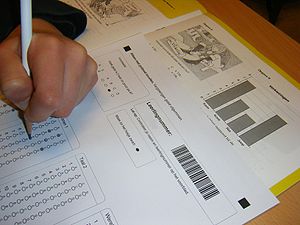Top 10 Test Taking Tips For The SAT
Taking an SAT test can be a difficult and nerve-racking experience. However, it is also something that you can actually enjoy and be able to get the most out of it that you possibly can. Let’s go over a hand-full of tips and guidelines that can help ensure that your test taking experience is a positive one.
1 – Know what you’re up against; take several full-length practice tests.
As the old saying goes, “practice makes perfect”, so be sure to practice a lot for SAT to get a great score. A SAT online course is a great way to practice and get familiar with the testing formats.
2 – Be sure to practice essay writing as there will be sections that require an essay response.
Essays are a very important part of successfully completing the SAT. So when doing a SAT practice test, be sure that they include essay portions as well.
3 – Take advantage of the fact that you can use a calculator.
There are some standardized tests that forbid the use of a calculator, but the SAT are not one of them, so take full advantage of that fact. Be sure to bring a calculator that you are familiar with in order to quickly get the results you are looking for.
4 – Do lots of reading, especially about topics that you aren’t too familiar with.
This can help you to read faster and comprehend more. It’s important to remember during your SAT prep that the test is timed, so the quicker you can read the question, the more time you will have to answer it.
5 – Study lots of vocabulary and try to retain the new words.
Another key ingredient for successful SAT prep is being familiar with lots of different words. The SAT tests vocabulary both directly and indirectly by scattering words that you should know throughout the test.
6 – Be sure that you understand the test structure.
At this point in your life, you’ve probably taken a lot of tests by now. However, don’t let that lull you into a sense of complacency with the SAT. They are not structured like most tests. A good SAT practice test can help you become familiar with the structure and layout of the actual SAT test.
7 – Try to memorize basic rules and formulas as it will save you precious time in the long run.
Any equations, processes, or formulas that you can memorize will help you out in the long run. For example, even if you have access to a calculator, simply remembering the formula to get the answer can be faster than having to put all the information into your calculator.
8 – Use multiple choice answer options to your advantage.
A large portion of the SAT are multiple choice answers. If you come across a question you aren’t sure about, first try to eliminate possible answers that you know just can’t be an option for the correct response. Then through the process of elimination, your possibilities can be trimmed down drastically.
9 – Know when to guess and know when to skip questions.
Remember not to just blindly guess answers as it can be more beneficial for your score to leave an answer blank if you don’t know the answer and can’t eliminate the majority of the responses as possibilities.
10 – Stay calm.
Staying calm is always the key to success. The more nervous, stressed, and uptight that you are, the less your mind will be able to concentrate and the important task at hand, the test.

















